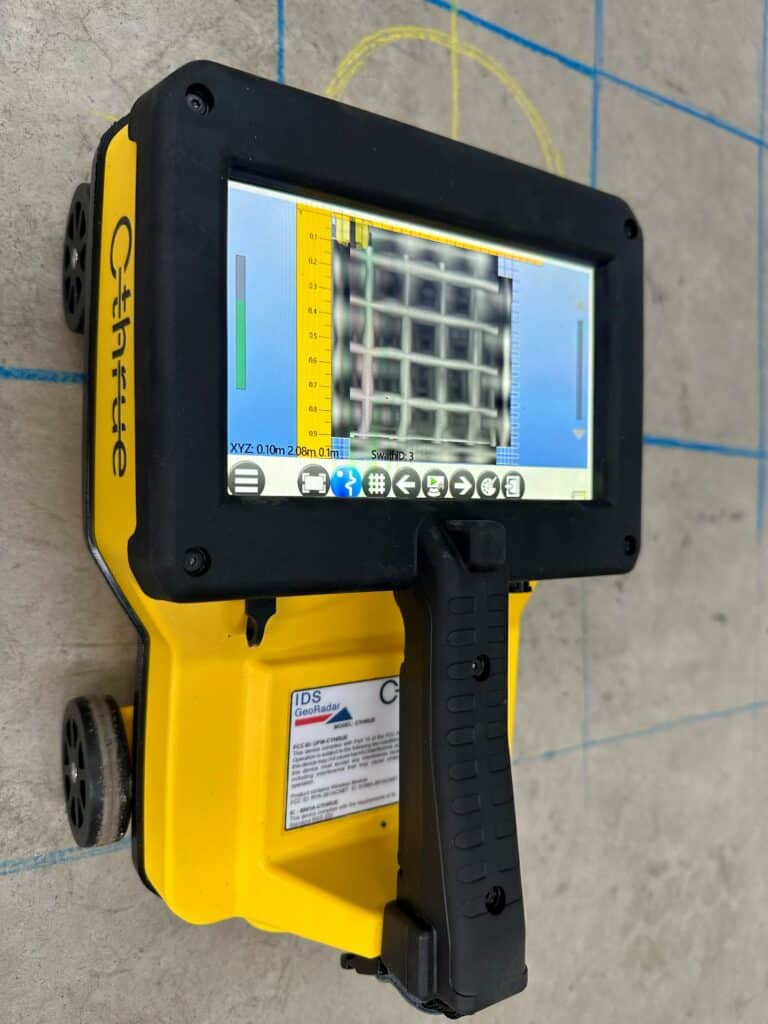Comprehensive Guide to Concrete Scanning Technologies
Comprehensive Guide to Concrete Scanning Technologies
Blog Article
Elevate Your Construction Refine With the Strategic Insights of Concrete Scanning for Boosted Productivity
In the realm of modern-day construction practices, the mission for performance and precision is extremely important. Embracing ingenious modern technologies has ended up being a cornerstone for accomplishing these purposes. One such innovation that has actually reinvented the construction market is concrete scanning. By harnessing the calculated insights supplied by concrete scanning, building and construction professionals can unlock a world of enhanced productivity and structured procedures. The effects of incorporating concrete scanning go much beyond surface-level benefits, providing a profound impact on project outcomes.

Benefits of Concrete Scanning
Enhancing task performance and security, concrete scanning provides a non-destructive technique for discovering surprise things within concrete frameworks. By using technologies such as ground-penetrating radar (GPR) and concrete x-ray imaging, building and construction groups can accurately locate rebar, post-tension cables, electric channels, and other blockages before boring, cutting, or coring into concrete.
The advantages of concrete scanning are many. Building and construction websites can be intricate settings, and knowing what exists below the surface area can avoid crashes and injuries.
Furthermore, concrete scanning promotes overall project effectiveness by simplifying process and avoiding rework. By recognizing possible issues at an early stage, groups can readjust their strategies proactively, saving time and resources in the future. Essentially, the adoption of concrete scanning innovations is a calculated financial investment that pays dividends in terms of efficiency, safety and security, and cost-effectiveness.
Technology Assimilation for Effectiveness
Concrete scanning's capability to improve workflows and enhance job effectiveness can be further optimized with tactical integration of innovative modern technologies. By incorporating Structure Information Modeling (BIM) software into concrete scanning procedures, building and construction teams can achieve a greater level of precision and sychronisation. BIM enables the development of 3D designs that offer comprehensive insights right into the project, allowing much better decision-making and decreasing the probability of errors. Furthermore, the assimilation of Enhanced Fact (AR) technology with concrete scanning can boost on-site visualization, enabling project managers and workers to overlay digital info onto the physical atmosphere in genuine time. This can assist in much more exact positioning of components and improve interaction amongst staff member. The use of drones for aerial studies in combination with concrete scanning can expedite data collection and analysis, making it possible for quicker decision-making and progress tracking. Generally, the critical combination of these modern technologies can significantly boost performance and productivity in construction jobs.
Staying Clear Of Expensive Errors
Exactly how can meticulous attention to detail during concrete scanning procedures aid building and construction groups in avoiding pricey mistakes? By utilizing sophisticated scanning technologies such as Ground Permeating Radar (GPR) and electromagnetic induction, building and construction groups can properly discover rebar, utilities, spaces, and other obstructions within concrete structures. Additionally, concrete scanning aids in making sure architectural stability by determining weaknesses or flaws in the concrete very early on, enabling for timely repair services and adjustments.
Enhancing Job Management
Careful focus to information during concrete scanning refines not just aids in avoiding costly errors but additionally lays a strong foundation for efficient task management in construction endeavors. By including concrete scanning innovation into job administration strategies, building and construction groups can streamline workflows, improve interaction, and make certain that projects remain on track.
Concrete scanning supplies beneficial understandings into the structural stability of existing components, allowing task supervisors to make informed choices concerning layout alterations or building and construction sequences. This aggressive approach reduces the danger of unforeseen delays or remodel, ultimately conserving time and resources. Additionally, the data obtained from concrete scanning can be integrated right into Structure Details Modeling (BIM) platforms, making it have a peek here possible for real-time collaboration and sychronisation amongst different stakeholders.
Furthermore, concrete scanning assists job managers identify prospective hazards or barriers prior to they rise into bigger concerns, promoting a much safer workplace for all entailed. With improved exposure and accuracy supplied by concrete scanning modern technology, job supervisors can properly intend, monitor, and implement building jobs with higher efficiency and confidence.
Optimizing Efficiency
One key aspect of taking full advantage of productivity is with the fostering of concrete scanning innovation. By making use of ground-penetrating radar (GPR) and other scanning approaches, building and construction teams can properly locate rebar, channels, and various other subsurface elements, lessening the risk of expensive errors and hold-ups throughout excavation and drilling.
Furthermore, accepting Building Info Modeling (BIM) software program can considerably boost productivity by producing thorough 3D models that improve job visualization and control amongst different professions. BIM permits better clash detection, allowing concerns to be recognized and dealt with before building even begins, saving time and sources in the future.
Carrying out a lean building strategy, which focuses on getting rid of waste and optimizing efficiency across all task stages, is another effective strategy for making the most of performance. By cultivating cooperation, interaction, and constant enhancement, building and construction groups can work much more cohesively towards accomplishing job goals in a effective and structured way.
Conclusion
In conclusion, the strategic execution of concrete scanning in the construction process provides many benefits, including boosted efficiency, price financial savings, improved task monitoring, and improved performance. By integrating this innovation, building groups can avoid expensive mistakes, streamline their procedures, and maximize their total job output. Concrete scanning is a valuable device that can boost the building procedure and bring about more effective and lucrative outcomes.

Report this page